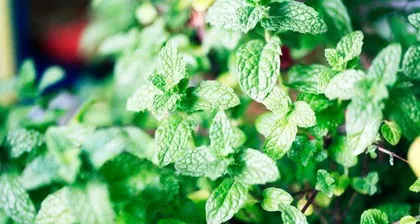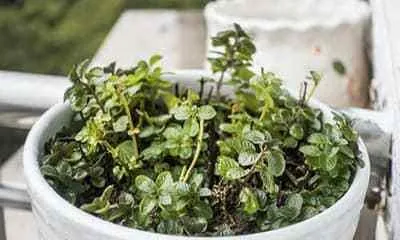Mint is a popular herb, and its fresh scent and unique medicinal value make it an essential plant for many homes and farms. If you enjoy growing mint or are trying to propagate it, you will surely encounter a question: Can mint cuttings survive? This article will explore the secrets of mint growth from three aspects: propagation methods, care techniques, and growth principles, helping you successfully propagate mint.

Select a healthy mint plant
To successfully propagate mint, the first step is to choose a healthy mother plant. Observe whether the plant is vibrant, if the leaves are fresh green and glossy, and if the leaf size is uniform. These are all important indicators for selecting a mother plant.
Determine the time and method for taking cuttings
After selecting a mother plant, the next step is to determine the time and method for taking cuttings. The best time for taking mint cuttings is in the spring, when new shoots have emerged and the leaves have not fully unfolded. At this point, soft cuttings can be placed in soil to root. There are three main methods for propagation: water propagation, soil propagation, and air layering. Different methods are suitable for different environments and needs.

Prepare a suitable growing environment
When taking cuttings, it is necessary to prepare a suitable growing environment for mint. Mint thrives in sunny, well-ventilated, and moderately humid environments. It is best to choose a bright, warm, and airy location, plant it in loose, humus-rich soil, and maintain appropriate humidity and temperature.
Provide adequate water
After taking cuttings, you should promptly provide the mint with an adequate amount of water to maintain soil moisture. However, be careful not to overwater, as this can lead to waterlogging and root rot.
Prevent over-fertilization
During the growing process, mint needs a moderate amount of nutrients, but excessive fertilization can cause root damage and unhealthy growth. You should apply fertilizer in moderation after taking cuttings and supplement it regularly according to the plant's needs.

Avoid excessive sun and rain
Mint prefers a warm and humid environment, but excessive sunlight or heavy rain can adversely affect its growth. During the growing process, it is important to avoid overexposure to the sun and rain.
Prune and pick leaves at the right time
Timely pruning and leaf picking can promote mint's growth and propagation. During the growing process, regularly remove old leaves and prune the branches as needed to maintain the plant's health and appearance.
Monitor for pests and diseases
During the growing process, mint may be troubled by some pests and diseases, such as aphids, powdery mildew, and spider mites. For these issues, we should detect them promptly and take measures to deal with them.
Maintain ventilation and sunlight
Mint growth requires plenty of sunlight and ventilation. Excessive darkness and humidity can affect mint's growth, so ensure the plant gets adequate sunlight and maintain good air circulation.
Provide appropriate support for mint
During the growth of mint, some branches may bend or droop. At this point, they need appropriate support to maintain the plant's stability and health.
Pay attention to the root system
The root system is crucial for mint's growth, and we need to pay attention to and maintain its condition. During the growing process, regularly prune dead roots and maintain an appropriate root system size.
Maintain a suitable temperature
Mint prefers a warm environment, but temperatures that are too high or too low will affect its growth. During the growing process, maintain a suitable temperature, especially keeping the indoor temperature appropriate in winter.
Ensure adequate moisture
Mint growth requires sufficient water, but avoid overwatering. During the growing process, maintain appropriate soil moisture and supplement the plant with water as needed.
Monitor the plant's growth
The growth of mint requires our continuous attention and observation. Discover and address problems in a timely manner. If issues such as abnormal growth, color changes, or leaf problems occur, adjustments should be made promptly.
Mint cuttings can survive, but for them to grow healthy, continuous care and maintenance are required. Through efforts such as selecting a healthy mother plant, using appropriate propagation methods, providing a good growing environment, regular pruning, and paying attention to pests and diseases, we can help mint thrive and enjoy its fresh scent and medicinal value.